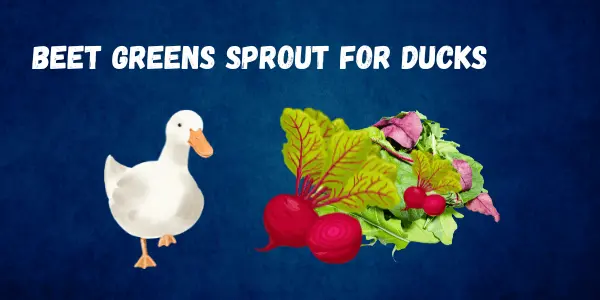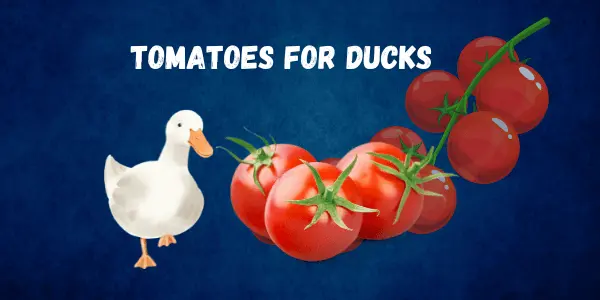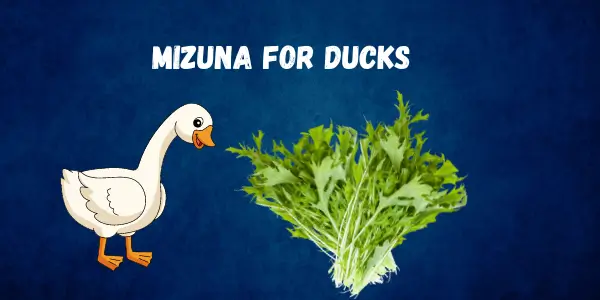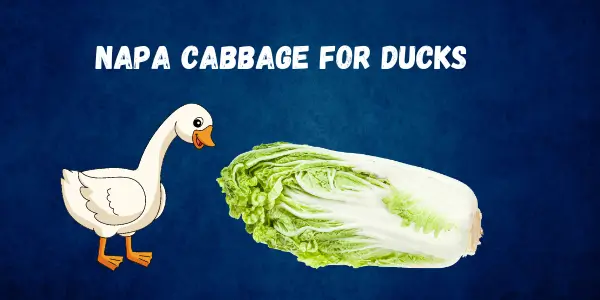Can Ducks Eat Turnip Greens? A Complete Feeding Guide
Published: 15 Sep 2024
Ducks can eat turnip greens as part of a balanced diet. These leafy greens provide essential nutrients but should be fed in moderation. While turnip greens offer health benefits, overfeeding may lead to nutritional imbalances. Understanding their role in a duck’s diet helps ensure safe consumption.
Can Ducks Eat Turnip Greens – What Are Turnip Greens?
Turnip greens are the leafy tops of the turnip plant (Brassica rapa). These greens are edible and commonly used in human and animal diets. They are rich in vitamins and minerals, making them a nutritious addition to a duck’s diet. Ducks can eat turnip greens both raw and cooked, but preparation matters for proper digestion.

Nutritional Value of Turnip Greens for Ducks
Turnip greens contain essential nutrients that support a duck’s overall health. They provide:
- Vitamins: High in vitamin A, C, and K, which support immune function and bone health.
- Minerals: A good source of calcium for eggshell formation in laying ducks.
- Protein: Contains plant-based protein, though ducks still require other protein sources.
- Fiber: Aids digestion and maintains gut health.
These nutrients contribute to a well-rounded diet when fed alongside other vegetables and grains.
Can Ducks Eat Turnip Leaves and Other Parts?
Ducks can safely eat turnip leaves in moderation. However, feeding large amounts may cause digestive issues due to the presence of oxalates, which can affect calcium absorption. While ducks can nibble on turnip roots, they are high in starch, so they should only be an occasional treat. Small pieces ensure easier consumption and digestion.
Health Benefits of Feeding Turnip Greens to Ducks
Turnip greens are a great source of essential vitamins and minerals. They provide:
- Vitamin K for blood clotting and bone health.
- Vitamin C to boost the immune system.
- Calcium for strong bones and eggshell production.
- Antioxidants to reduce oxidative stress and improve overall health.
Feeding ducks a variety of greens, including turnip greens, ensures a balanced nutrient intake.
How Turnip Greens Support Overall Health
Including turnip greens in a duck’s diet offers several health benefits:
- Supports digestion due to high fiber content.
- Promotes feather health with essential vitamins.
- Enhances immunity with antioxidants.
- Aids in egg production by providing necessary calcium and minerals.
While turnip greens are nutritious, they should be part of a diverse diet that includes grains, proteins, and other vegetables.
Can Ducks and Chickens Eat Beet Greens and Turnip Greens Together?
Ducks and chickens can eat both beet greens and turnip greens. These leafy greens provide similar nutrients and can be offered in combination. However, they contain oxalates, which may interfere with calcium absorption. Feeding them in small amounts alongside a well-balanced diet prevents nutritional deficiencies.
Potential Risks and Considerations
Oxalic Acid in Turnip Greens and Its Effect on Ducks
Turnip greens contain oxalic acid, a natural compound found in many leafy greens. In large amounts, oxalic acid can bind with calcium, reducing its absorption. This may lead to weakened bones or poor eggshell quality in laying ducks. However, feeding turnip greens in moderation alongside calcium-rich foods, such as crushed eggshells or oyster shells, helps prevent any negative effects.
Can Ducks Have Beet Leaves and Other Leafy Greens?
Ducks can eat beet leaves, but they also contain oxalates, similar to turnip greens. While beet leaves are a good source of vitamins and minerals, excessive amounts can interfere with calcium levels. Other leafy greens, such as lettuce (except iceberg), kale, and Swiss chard, can be included in a duck’s diet. Rotating different greens ensures a balanced intake of nutrients while minimizing potential risks.
How Much Turnip Greens Can Ducks Eat?
Turnip greens should be fed in small quantities as part of a varied diet. A few chopped leaves mixed with other vegetables and grains is sufficient. Overfeeding may cause digestive upset or nutritional imbalances. Ducks should primarily consume waterfowl feed, grains, and natural foraging foods, with turnip greens serving as an occasional supplement rather than a staple.
How to Safely Introduce Turnip Greens into a Duck’s Diet
Preparing Turnip Greens for Ducks
Before feeding, turnip greens should be:
- Washed thoroughly to remove pesticides or dirt.
- Chopped into small pieces for easy consumption.
- Served raw or lightly steamed to maintain nutrients while improving digestibility.
Avoid adding any seasonings, oils, or dressings, as these can be harmful to ducks.
Serving Turnip Greens in Manageable Pieces
Ducks do not chew food thoroughly, so large pieces of turnip greens can be difficult to swallow. Cutting the leaves into manageable pieces prevents choking and ensures easier digestion. Mixing turnip greens with other vegetables, such as peas or shredded carrots, adds variety and balances their diet.
Best Time and Frequency to Feed Turnip Greens
The ideal way to feed turnip greens is:
- In the morning or afternoon as part of a fresh meal.
- Once or twice a week to prevent excessive oxalate intake.
- In combination with other foods to maintain a balanced diet.
Observing how ducks respond to new foods ensures they tolerate turnip greens well. If any digestive issues arise, reduce the amount or replace them with other leafy greens.
Can Ducks Eat Beet Tops and Other Root Vegetables?
Ducks can eat beet tops, but like turnip greens, they contain oxalates, which can reduce calcium absorption. Feeding beet tops in small amounts ensures they do not negatively affect bone health or eggshell quality in laying ducks.
Other root vegetables, such as carrots, sweet potatoes, and potatoes (cooked only, without skins), can be offered in moderation. Ducks can also eat radish greens, but they should be introduced gradually to prevent digestive issues.
Comparing Turnip Greens with Radish Greens and Lettuce
Turnip greens, radish greens, and lettuce are all leafy greens that ducks can eat, but they differ in nutritional value:
- Turnip Greens: High in vitamins A, C, and K but contain oxalates.
- Radish Greens: Rich in fiber and antioxidants, but slightly spicy in taste, so they should be fed in moderation.
- Lettuce (except iceberg): Provides hydration and some nutrients, but lacks the same level of vitamins as turnip greens.
Iceberg lettuce should be avoided as it has little nutritional value and may cause digestive upset. Offering a variety of greens ensures balanced nutrition.
What Other Leafy Greens Are Safe for Ducks?
Ducks can eat various leafy greens, including:
- Kale – Rich in vitamins and minerals.
- Swiss chard – High in antioxidants but should be fed in moderation due to oxalates.
- Collard greens – A good source of calcium and fiber.
- Dandelion greens – Nutritious and found naturally in many environments.
Feeding different greens provides a wide range of nutrients while preventing overconsumption of any single type.
FAQs on Feeding Turnip Greens to Ducks
Baby ducks can eat turnip greens, but only in small pieces and alongside their starter feed. Their digestive systems are still developing, so introducing greens gradually prevents digestive upset. Turnip greens should never replace a duckling’s main diet, which consists of high-protein starter feed.
Ducks can eat both raw and cooked turnip greens.
- Raw greens retain the most nutrients but should be chopped into small pieces.
- Lightly steamed greens can reduce oxalate levels, making them easier to digest.
Cooking should be minimal to preserve nutritional value, and no seasonings, oils, or additives should be included.
Wild ducks primarily eat aquatic plants, small fish, and natural foraging foods. While they can consume turnip greens if offered, they are not a natural part of their diet. Feeding wild ducks should be limited to natural foods such as grains and leafy greens that mimic their natural foraging habits.
Conclusion
Turnip greens can be a good food for ducks when fed in moderation as part of a diverse diet. They provide essential nutrients but contain oxalates, so they should be balanced with calcium-rich foods. Ducks can also eat beet tops, radish greens, and other leafy vegetables, but variety is key to maintaining good health. Proper preparation and portion control ensure that turnip greens remain a safe and nutritious treat for both domestic and backyard ducks.

- Be Respectful
- Stay Relevant
- Stay Positive
- True Feedback
- Encourage Discussion
- Avoid Spamming
- No Fake News
- Don't Copy-Paste
- No Personal Attacks

- Be Respectful
- Stay Relevant
- Stay Positive
- True Feedback
- Encourage Discussion
- Avoid Spamming
- No Fake News
- Don't Copy-Paste
- No Personal Attacks





